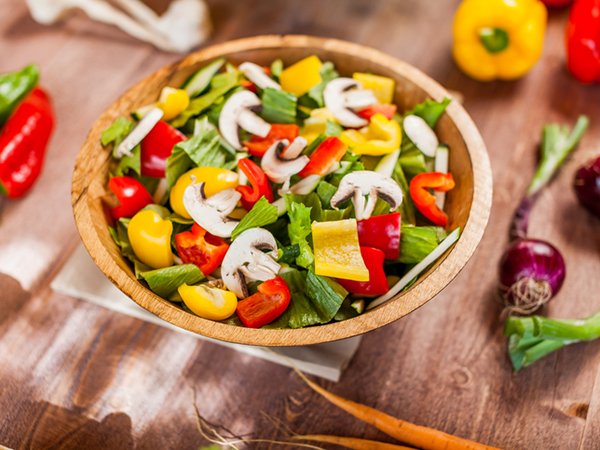Fruits and vegetables are loaded with the nutrients kids need to grow, be strong and healthy and perform well in school. Unfortunately, most children don't eat enough. Here are some ideas on how to make meals nutritious and delicious by incorporating fruits and veggies in fun and interesting ways that kids will enjoy.
Fill Half the Plate with Fruits and Vegetables
Encourage kids to consume more of these nutritional powerhouses by making them the star of the meal. Dish out generous helpings and always include options that your family enjoys. Serve vegetables in their undisguised state to give your child an opportunity to explore the tastes, textures and aromas. When kids see vegetables served center stage they learn to internalize what a balanced plate looks like. In addition, since most vegetables require lots of chewing, they naturally also slow down children, helping them eat more mindfully and encourage them to linger at the table rather than squirming in their seats.
Take Fruit to Lunch
Fruit is a great way to add a little sweetness to lunch. Make a habit of tucking an apple, tangerine, melon slices, two plums or kiwifruit, grapes, cherries or dried fruits into lunch bags.
Stuff Sandwiches with Fruits and Vegetables
Encourage produce-heavy sandwiches by creating a sandwich bar with whole-grain breads, wraps and rolls, various lean meats, low-fat cheese, sliced tomato, bell pepper rings, cucumber rounds, lettuce, marinated artichoke hearts, roasted red peppers, avocado slices, hummus and mustard.
Experiment to Try New Flavors and Textures
Substitute a new-to-you fruit or vegetable in a favorite recipe. Try mustard greens in stir-fries, jicama in salad or plantains in stew. Also be sure to have your children pick out a new fruit or vegetable at the grocery store or farmers market to make kids more likely to try new flavors.
Toss a Fruit and Vegetable Salad
Combine colorful vegetables, legumes and fruits (such as berries, kiwifruit or mandarin oranges). Even if you prefer iceberg lettuce, which delivers less nutrients than other greens, pair it with other veggies — sliced beets, diced peppers, shredded red cabbage, spinach leaves, baby carrots.
Try Veggies at Breakfast
Fill omelets with a rainbow of diced veggies, create a colorful tofu scramble with your favorite vegetables or serve toast topped with avocado, white beans and sauteed mushrooms.
Incorporate Veggies into Other Foods
If your children prefer to push peas around the plate instead of eating them, you've probably considered sneaking a few veggies into their favorite foods. And while a little stealth nutrition can help children eat more vegetables, it shouldn't be your only strategy. If you're always hiding vegetables, how will your family get to know and enjoy them? By offering your family a variety of options they will be more likely to grow into true vegetable lovers.
You don't need to hide vegetables on a regular basis. However, if you have a picky eater who doesn't like vegetables, disguising them a little can be a helpful way to get more produce into their diet. When it comes to getting children to happily eat veggies, the more alternatives the better. So go ahead and fold mushrooms into meatloaf and shred carrots into spaghetti sauce.
Using vegetables as a condiment is an easy way to give veggies more face time without making it overwhelming. Top pizza with onions and peppers, sprinkle tomatoes and avocados on tacos or fold butternut squash into mac and cheese.
Mix it Up
Eating the same old plate of steamed vegetables each day would be boring for anyone, so be sure to keep it interesting and varied. For instance, just because your family doesn't enjoy roasted vegetables doesn't mean they won't love them sautéed with garlic. Get creative and try different cooking methods, herbs and spices or try offering veggies raw with dip or in a crunchy salad.
If these efforts don't immediately boost your children's fruit and vegetable intake, take heart and be patient. Never force the issue because that usually backfires. Simply continue to make fruits and veggies a part of every meal and snack and offer them in a variety of ways. Eventually your children will develop a taste for a few favorites.
Find a Nutrition Expert
Looking for credible nutrition information and recommendations? The Academy of Nutrition and Dietetics' network of credentialed food and nutrition practitioners are ready to help!

